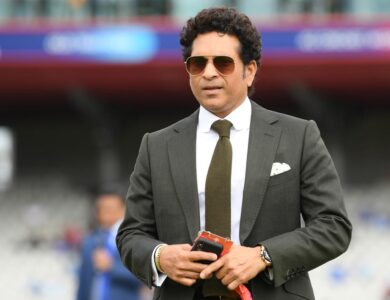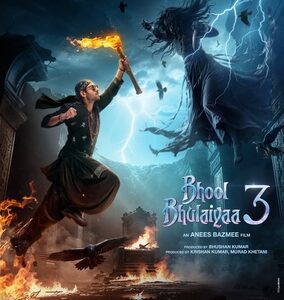
Sholay Trivia: Ramesh Sippy Didn’t Direct the Entire Film
The 1975, classic Sholay, directed by Ramesh Sippy, will be remembered as one of the greatest Indian films ever made. The sheer number of memorable characters, an epic storyline, and unforgettable dialogues are some of the factors that turn this film into a memorable one. But little do many know that an interesting behind-the-scenes fact: Ramesh Sippy didn’t direct the entire film himself. While he was the creative mind, along with being the prime director of the film, it is intriguing that some sequences of the movie were dealt by other directors for more than one reason.
Let’s probe deeper into this lesser-known trivia and check the circumstances that led to such a delegation of duties in terms of directing how it affected the making of this iconic film.
The Visionary: Ramesh Sippy’s Role
In the eyes of cinema, Ramesh Sippy is one of the finest directors of his time, basically the prime force behind Sholay. Hailing from a family background that had the rich legacy of films and as the son of producer G.P. Sippy, it was sure that Ramesh Sippy brought into the limelight a certain vision of grandeur and scale that made Sholay an epic tale of friendship, revenge, and justice.
However, the making of the film ran into several problems at the time of shooting and, hence, Sippy had to split the directorial assignment among others. The scale of the film was huge and shot in many locations; hence, it became tough to pack off the scenes within the schedule. Here enters other directors in the scene to help the project.
The “Action” Man: M.A. Thirumugham was also a self-proclaimed “action” man.
Among the main individuals who guided some of the scenes of Sholay was M.A. Thirumugham, a specialist in action film directing, having handled action sequences for quite a long time. Thirumugham had directed action, as well as many stunt and over-the-top fight scene sequences in Sholay.
The dacoit attacks and the train robbery, chase sequences- these are important action inputs which made Sholay a cult film. These scenes were rightfully designed with care and needed technical know-how that didn’t come under the regular Bollywood of those days. This helped Thirumugham stamp technical perfection along with visual impact on these sequences as an important factor to define the action genre in Indian cinema.
Uncredited Directors and Assistants
Apart from M.A. Thirumugham, many more assistant directors were pivotal to the channeling and molding of the final product of Sholay. One of them was J.P. Chowksey, a scriptwriter and filmmaker in his own right who played an important behind-the-camera role. He attended to the matter of scene continuity and was creative regarding inputs for the intense dialogue-seeking scenes between the characters.
The third key credit was to the dialogue writer, Salim-Javed. This is the very famous couple who actually handled both the screenplay and the dialogues. Salim-Javed’s vision for the characters sometimes almost dictated which ways scenes would go: even today, many believe that the two writers would make many of their creative decisions in-camera on set, even suggesting specific ways to capture the essence of their words.
The “Gabbar” Factor
The most famous of all characters in Sholay perhaps, and one of the most unforgettable characters in Indian cinema, is dacoit Gabbar Singh, played by Amjad Khan. Gabbar’s impact has become the dictionary definition of villainy, and you can bet that his scenes were one of the areas where additional directorial input was required.
In fact, some of the most memorable scenes of Gabbar-sir, including his opening sequence in which he frightens his gang members for their inability to kill the heroes-killing Gabbar-gangmembers were achieved due to the contributions made by various assistant directors, though Ramesh Sippy had visualized the menacing aura of Gabbar to begin with, those assistant directors filled the finer details of lighting, camera angles, even the delivery of dialogue that contributed to some of the most chilling and unforgettable moments of Indian cinema.
Cinematography and Aesthetic Choices
Dwarka Divecha was also closely related to the viewing of the film in terms of the way it was photoperiodized. Though not a director, his professionalism significantly added to the directions of the film. Divecha’s mastery in the use of light and shadow in creating forceful dramatic moods gave an intensity to what otherwise was desolate rocky terrains at Ramgarh, which became the location for much of this film. His choices for cinematography dictated much of how the scenes were shot and framed.
Many of the exterior shots, especially the long action and aerial shots, was also accomplished by Divecha himself with minimal input from Sippy. In this regard, Divecha performed quasi-directorial roles; he orchestrated complex shots that mainly made up the contextual ramification of the movie.
Effect of Joint Direction
Although Ramesh Sippy was given credit for the direction of Sholay, the effort was very collaborative. The delegation of some scenes to other directors and assistants did not portend to inadequacy in the skills of Sippy but to the enormous size of the project. In fact, the collaborative nature of the direction probably went hand in hand with the disparate appeal of the film, synthesizing a much better story out of the strengths of different filmmakers.
Although there were far too many hands guiding the film, Sholay had a unified vision largely due to the oversight and direction of Ramesh Sippy. He was able to harmonize the efforts of various contributors working on the film so that the final product became seamless rather than disjointed.
Legacy of Sholay’s Direction
Today, Sholay is celebrated as one of the greatest films of all time, and its direction is widely lauded for its grandeur and detail. That many directors have been part of it does not detract from Sippy’s brainwave but throws the role of teamwork in film-making into the very dialogue that relates to it. This under-known trivia about Sholay adds to the film’s mythos, underscoring the complexity and effort taken in making this master timelessness.
Conclusion Sholay is a true testimony of collaboration in cinema. Though the credit of this film goes to Ramesh Sippy as a director, if proper credit is given to others, then the way this film was produced will be more clearly seen.




